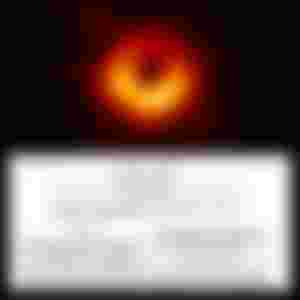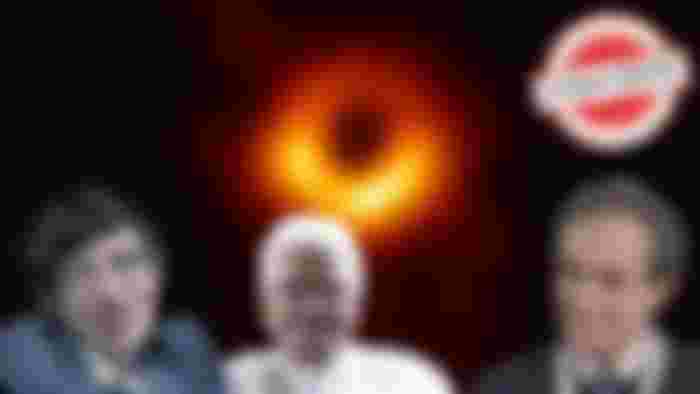Hello friends.. I am back..
How are you? I am fine but feeling bored..
What are you doing now? Now i am writing about this article
Hawking, Penrose is exposed to the light of Amal? What history says
Did Stephen Hawking and Roger Penrose really come to light in Amal Alo?
The first light that shone in the fifth decade was a Bengali child. Professor Amalkumar Roychowdhury. Within a month of Einstein's death. In 1955. His famous 'Roy Chowdhury Equation' was published.

What was his later recognition from Hawking, Penrose? Did Hawking and Penrose highlight the importance and significance of the equation in speeches, discussions or in their research papers or in written books? How much?
Anandabazar Digital sought answers to these questions through history. Examine how a Bengali boy walked the path of his equation three and a half decades after the publication of general relativity and how much recognition he later received from Hawking and Penrose. Western world.
Destroyed ghosts, the future:
According to that history, it was first known in Amal Alo that all destruction is our ghost or past. All that can be destroyed in the future of the universe. In the terminology of physics which is ‘singularity’.

Which also completely swallows time. Even the light cannot avoid its omnivorous hunger. The space and time of the universe (‘space-time’) which twists and turns so much that that curvature (‘curvature’) becomes infinite. Which can no longer be measured. The density of particles or matter (mass in a single volume) also becomes infinite. Gravity also becomes infinite. No rules of science apply then.

105 years ago, in November 1915, when his paper on general relativity was published, Einstein saw the shadow of destruction. But did not want to agree. Asked himself repeatedly. Members of the Royal Society have repeatedly asked how this happens. If so, defeat! How is such a 'scandal' possible in reality? Where space and time will be twisted in such a way that the object (or, s) inside it will become absolutely hapless! In the words of the magician, ‘vanish’! The creator of general relativity did not find the answer.
Amalkanti also could not find Roddur.
Amalkanti and Roddur were also looking for this story! From Einstein's equations of general relativity, Amal, a resident of North Calcutta and later of Baliganj Place, saw a shadow of utter darkness. In the primitive past of this universe. Which may be in the final future of the universe.

This ‘Amalkanti’ also sought a way out of that omnipresent darkness. Wanted to get rid of the inevitability of darkness. Couldn't. This 'Amalkanti' also did not find that 'Roddure'.
Why did Amal expect ‘Roddure’?
Normally, all the particles of water in the stream of the river that we see do not merge at one point. Why not mix? In that current, water particles have different speeds. Vortices also vary. Which can ignore the pull (that is, gravity) of water particles coming to themselves. As a result, not all particles in the current flow toward a single point. They may have different aspects. Even if.

As time goes on, so should the particles of the universe. Why would they all attack each other due to gravity? Some of them must have the ability to ignore the speed, some of the gravity of the vortex. So is it fair to assume that all the particles in the universe will merge at some point after a while due to gravity?
The river can sometimes pass through the gorge in its course. There his trajectory narrowed somewhat. As a result, the current does not look as wide as before. It shrinks into less area. The water particles then come closer. This further increases their gravitational pull. But even after that, they don't get mixed up at one point. The current continues to flow towards the front. However, due to the difference in velocity and rotation, some water particles are scattered here and there. Compared to one water particle, the other runs and falls a little behind.
The difference is that the particles of the universe just move forward. Over time. No particles of that current are scattered here and there. The other does not lag behind the other.
Focused point instead of sunrise!
Amal saw that as he moved forward, all the particles of the universe were becoming 'focused' at some point. The trajectory of all particles is disappearing at one point. The way we bring light to a point with fire glass. A dot of paper burns in that light and turns black. As a result, Amal could not find 'Roddur'!

Instead, you see, this omnipresent, omnipresent darkness is the most primitive past of our universe. It may even be his final future.

Showed that this is the inevitable and inevitable consequence of Einstein's equations of general relativity. ‘Inevitable Consequences’. Singularity. When it reaches a substance and its molecules, the density of atoms becomes infinite. The curvature of space-time in the universe also becomes infinite. When you reach there, the way out of the light is closed. Even time or period (‘time’) no longer exists. All the laws of science, all interpretations (‘physical law’) become obsolete. It doesn't work anymore. This is what is known as Roy Chowdhury Equation today. The application of which is increasing in different branches of science. For 6 and a half decades.
After a certain time everything in the universe is a slave to this inevitability! There is no way to get rid of it. Impossible.
It is also possible to go back in time and search for the past in the way of finding the history of the passage of time. Through mathematics.
How was the past? It is possible to imagine it from the picture of the future, mathematically. That is what Amal did.
He had the advantage, as Edwin Hubble showed twenty years ago, that the galaxies of the universe were moving away from each other. All the cosmic objects are moving away. The way in which the distance between two points on the body of a balloon that swells gradually increases.
Abel showed that the universe was expanding like a balloon. Which means it's about to be the most delusional time of the year, as well. The more it was in the past, the more it shrunk. In this way Amal reached that primordial point of the universe. Whose name is the Big Bang. At that point the contraction of this universe was infinite. His curvature was also infinite. As a result, there was no volume of particles or matter at that time. The density was infinite. It is as if the whole volume of the particles, all the curves of their path have been swallowed by someone. Nothing left! Which is basically singularity.

The past, the two giants of the future
The universe of 1360 million years merges with time at a point. Where the density of a particle or substance becomes infinite. The light does not come out. Time is no more. As a result, it is no longer possible to go back in time. The curvature of the universe also becomes infinite. As if swallowing everything. ‘Maharaksas’. That is the Big Bang. From which the universe was born. This is the Big Bang singularity. Also called 'time-like singularity'.
Again, after a certain period of time, all the particles, matter, light, space, and time in the universe can merge into a single point. From where no one can come out. It is not possible to move time forward. The name of that inevitable consequence is black hole. Another monster. It's black hole singularity. Also called 'light-like singularity'.
The universe is not homogeneous
The year after the paper on general relativity was published, the scientist Swerschild showed that at one point, all the laws of science were becoming obsolete.
Those who did not want to accept it (even Einstein) argued that Swerschild's mathematical decision was based on a very general idea. Where a star was captured is the equinox from beginning to end. ‘Homogeneous’. It has the same amount of matter everywhere. There is no inequality in the distribution of wealth. At the very center of that pure sphere, all the laws of nature are obsolete. Inexplicable. Such as infinite numbers.
But there may not be the same amount of matter everywhere in a star. In reality, it does not exist. So at its core, all the laws of science are becoming obsolete, there seems to be a flaw somewhere in this decision.
The world is not the same everywhere. Somewhere mountains, somewhere plains, somewhere or rivers. Matter is not the same everywhere. The universe is like that.
Science ignores the infinite. Since there are no rules of science. Therefore, science never tries to understand the qualities, manners, behavior of an object that is at an infinite distance. It does so from a certain distance from the object. As far as the laws of science apply, to that finite distance.

That is what Amal wanted. But in solving the equations of general relativity he saw that after a certain period of time all their results became infinite. Merging to a point where no more rules of science apply.
Singularity is inevitably the inevitable consequence of the equations of general relativity, as indicated by a few other solutions or models until the early fifties, even after Swerschild.
Among those models are the Oppenheimer-Snyder model, the Lymantra model, the Friedman closed model and The Sitter Solution.
Particle Pathway: Newton vs. Einstein:
How is the universe going?
In explaining, Newton took the whole universe as a plane. His first law stated that if no force (‘force’) is applied from outside, a particle or substance travels in a straight line from one point to another in this universe. Take the easiest path. This is the shortest path of the particle or matter between the two points. ‘Geodesic’.
This is where Einstein's path diverted from Newton.
There are three types of geodesics in the universe:
These geodesics are basically of three types. The shortest curved path between two points in space (‘space’) by massless particles of light or photons, without any force, is called ‘null geodesic’ or light-like geodesic. This null geodesic was the subject of Penrose's research on singularity, published in '75. That singularity is actually the focal point of a black hole.
And the shortest curved path between two particles with mass without any force is called time-like geodesic. Roy Chowdhury Equation was first published by Amal which was researched. The point of that singularity is actually the Big Bang.
In addition, there is another type of geodesic. Space-Like Geodesic. Which results in space-like singularity.
Straight path, crooked path
In general relativity, Einstein said that there is no need for balls to explain the way particles travel. Where the universe looks will depend on how many massive objects there are. The greater the mass, the more the universe will be curved. This is gravity.
Since the universe will no longer be flat, the object will no longer be straight from one point to another. The path will be crooked. But that would also be the shortest distance of the particle between the two points. This is the basic geodesic of any particle or substance in the universe. The shortest way to go.
Which means that where Newton thought that the path of a particle between two points is always a straight line if no force is applied, Einstein showed that even if no force is applied, the path of any particle in the universe is a curved line. Not a straight line.
All geodesics are going to merge at one point!
In the words of Professor Soumitra Sengupta, Academic Dean of the Indian Association for the Cultivation of Sciences (IACS) in Calcutta, Matching. As a result, the curvature of space and time is becoming infinite. From there, the particles' previous curved paths are no longer able to be brought out. In that infinite curvature of the point, all the paths of the particles are tangled. This is the Roychowdhury equation. "
On the way from Barisal to Kolkata Singularity.
Amal was born in Barisal, Bangladesh in 1923. After doing BSc from Presidency College and MSc from Calcutta University, he got a job in IACS's X-ray Crystallography Laboratory. As a Research Scientist. The work was not pleasing. Leave Ashutosh College. Didn't feel good there either, so came back to IACS. In the early fifties.
In 1953, he submitted his dissertation to the renowned international science journal, Physical Review. The title of the research paper was - ‘Relative Cosmology, One’. This was followed by two consecutive years of procrastination. Wait. The research paper was finally published in '55.
"It was probably too late for the referees to understand the originality, meaning and significance of this equation. The editor of the journal also apologized to Sir (Amal Roychowdhury) for the delay, ”said Soumitra, one of his favorite students. Amal who was a student continuously from ’66 to ’73. Even after that, until his death in 2005, Amal had almost always been with him.
An interesting piece of news was given by Professor Perth Ghosh, Distinguished Fellow of the Tagore Center for Natural Sciences and Philosophy, Kolkata. He remarked, "Amalbabu once told me the story of the publication of his research paper in Physical Review. The paper was not published for two years after its submission. Researchers and professors used to keep in touch with the journal authorities through letters. Several days after the submission, a referee read the research paper and sent it to the journal-authorities, stating that he had not found any mention of such an equation in any previous literature. Telling this story, Amalbabu smiled a little and said to me, "How do you get it? I was the first to show that. "
I think he thinks the referee is so stupid!
Mention of Roy Chowdhury in Hawking's PhD paper
According to history, the world's scientists who studied Einstein's theory and gravity became interested in Amal's equation soon after it was published.
That is 1984. Stephen Hawking is doing his PhD at Cambridge University. His work is also on cosmology. Hawking heard about the Roychowdhury equation. Hawking understood the significance of the equation. He had to use the Roychowdhury equation to carry forward the research.
Hawking admitted on the front page of his PhD dissertation, published in '86, that he had taken refuge in the Roychowdhury equation. Hawking's research paper, published in the Royal Society's journal, was entitled The Occurrence of Singularities in Cosmology. Hawking mentioned the Roychowdhury equation in the eleventh line of the research paper 'Introduction'. He was later mentioned in the 'Reference' section.
.
Within six months of Penrose's dissertation being published (January, '75), a dissertation by Hawking and GFR Ellis appeared in Physics Letters. Her title is ‘Singularities in Homogeneous World Models’. The necessity of the Roychowdhury equation was first clearly mentioned in that research paper.
Hawking in the ’70s, the Roychowdhury effect in Penrose’s research paper
Roger Penrose's first research paper on singularity was published in '75. In ‘Physical Review Letters’. Penrose then taught at Burkeback College in England. Which was titled ‘Gravitational Collapse and Spacetime Singularities’. Since then, Penrose has published a joint study with Hawking on Singularity almost every year until the '70s.
The latest research paper was entitled The Singularities of Gravitational Collapse and Cosmology. Published in the Journal of the Royal Society. That research paper also mentioned Roychowdhury Equation. It was written 'Raychowdhury effect'. The last paragraph on page 540 of the research paper states, "The fact that they do essentially a consequence of the Roychowdhury effect (1955)."
Roy Chowdhury Equation is also mentioned in Hawking's book
Hawking's book, The Large Scale Structure of Space-Time, co-authored with GFR Ellis, was published in the 1970s. Hawking writes about his inspiration in the Roychowdhury equation in many places in that book.
Hawking and Ellis wrote in the fourth chapter of the book, entitled "The Physical Significance of Curvature" on page 6, "Roychowdhury equations have a very important role to play in the evidence of the singularity theorem."
Hawking and Ellis also wrote on page 84 of the book to emphasize the importance of the equation, "this equation will play a major role in the study of singularity in the future."
Hawking-Penrose later admitted in his speeches in various countries of the world, including India, that he was inspired by the Roychowdhury equation.
Ratanlal Brahmachari was the first to speak in Germany
Sion Kar, a professor at the Indian Institute of Technology (IIT) in Khargpur, said, "I heard that when the Roychowdhury Equation was first published in '55, Satyendranath Bose's student, later Ratanlal Brahmachari, a prominent tiger expert, was in Germany." At that time, Amal's research paper was discussed in a seminar mainly with the encouragement of Ratanlal. I heard that he was the first to inform the members of the group of scientist Engelbert Schuching about this equation. Stephen Hawking may have learned about the Roychowdhury equation while working on the Hale-Narlika theory (‘Steady State Theory’) at Cambridge. Maybe Penrose also knew at that time. Although his research paper published in 1965 did not mention the Roychowdhury equation, Penrose later mentioned this equation in various research papers.
It was the Roychowdhury equation that opened my eyes: Narlikar
The year after Amal's death (2006), in an article in his memory, Jayant Vishnu Narlika, an Emeritus Professor at the Pune Inter-University Center for Astronomy and Astrophysics (AYUKA), described in detail how he first had a conversation with Amal in Texas. Narlikar was doing his PhD at Cambridge at that time. His supervisor was the eminent astronomer Fred Hail. With whom Narlikar later developed the counter-theory of the Big Bang. ‘Steady State Theory’.
Raychowdhury equation in the eyes of Professor Jayant Vishnu Narlikar.
Narlikar writes, "I first became acquainted with the Roychowdhury equation in the 70's. Going to work in the background to understand the essence of the claim of another model (hackman-shocking) of that time. That equation happened and opened my eyes. I realized that the model of two German scientists, Heckmann and Schuching, had different expectations and would never be fulfilled. "
From then on, Narlikar and Hale became interested in meeting AKR (Amal's short name).
Fred Hail thought Amal was very old!
The opportunity came in 1983. At a seminar in Texas, Amal met Narlikar. That first. Amal was the invited speaker there.
"I was surprised to see AKR at that time," Narlikar wrote. Seeing his equation, he thought that the depth of the equation could not come out of the head of any young person. He must be middle-aged. But at the time, AKR was only in his forties. "
All singularity is the seed of theorem
In a 2014 study published in the journal Classical and Quantum Gravity (The Nineteen Sixty-Five Penrose Singularity Theorem), the death of Spanish professor Jose MM Senovia and the death of Professor David Garfinkel at the University of Auckland in Rochester began, New Age. Through Roychowdhury Equation. Which contained the seeds of the next-day singularity theorem (Hawking-Penrose). Which later became the basis of all kinds of singularity theorems. "
This time, however, Penrose did not win the Nobel Prize for Singularity Theorem. To explain how black holes are formed (‘black hole formation’). Singularity is the center of that black hole. Which is covered with 'Event Horizon'. Black holes with these two.
However, if there is no singularity, there is no need for event horizon. And singularity is the essence of Roychowdhury equation. That is why the significance of Roychowdhury equation in black hole research is so much.
Indians did not recognize Amal!
However, the Indians had to be embarrassed about Amal. The importance of Roychowdhury Equation at the right time could not be realized by the then Indian scientists! The equation, published in '55, caused a stir in the Western world the following year, and within a decade it became one of Hawking-Penrose's tools of research. After Narlika's return to India in '62.
Amal of negligence! Not a shame for Indians?
Reminding Indians of that shame, in an article published in 2007, Jগrgen Ehlers wrote sarcastically, "The importance, significance and use of (Roychowdhury's equation) was not recognized by his (Amal's) Indian teammates at the time."
Now the Roychowdhury equation is also used for photons
In his first research paper on singularity, published in '75, Penrose made no mention of the Roychowdhury equation.
Narayan Bandopadhyay, a professor at the Indian Institute of Science Education and Research (ISAR Kolkata) in Mohanpur, who was one of Amal's students from '75 to '82, thinks Penrose may have been researching null geodesic or weightless photon particles at the time. In the early days of Roychowdhury Equation, Amal did the work with Time-Like Geodesic. With the movement of particles that have mass. So maybe Penrose didn't feel the need to mention the Roychowdhury equation then.
In Narayan's words, "55 years after the publication of Penrose's first research paper on singularity, we are now working with massive particles like photons, but the Roychowdhury equation is still being used. It is said, ‘Roychowdhury Equation for Null Geodesic’. Hawking refined his singularity theorem with Penrose in stages from ’75 to ’70. Others have done so even after that. The Roychowdhury equation has also been refined and enlarged. But the Roychowdhury equation has remained the basic foundation of all singularity theorems. This is the basic equation. It has been proven that this equation does not only apply to a particular field or situation; In the study of singularity, this equation is equally necessary in all cases. Important. The basis of all Hawking-Penrose singularity theory is the Roychowdhury equation. "
Sion says the way Amal wrote his equation in his research paper, published in '55, is no longer written that way. Although the main subject has not changed, it is written in modern mathematical language. And the contributions of Jেনrgen Ehlers and Rainer Shakespeare are undeniable. Edward Witton, a professor at Princeton University, described the way Amal reached his equation in a very simple way in a review last year.
Lev Landu, another eminent scientist, wrote an equation close to the Roychowdhury equation in his book, Classical Theory of Fields, shortly before '55. But that was for use in special cases. Since the Roychowdhury equation is not limited to any particular case, its acceptability is beyond dispute, ”said Sion.
According to Golam Murtaza Hossain, another professor from Kolkata, whether it is the Big Bang singularity or the black hole singularity, the Roychowdhury equation can explain all kinds of singularity at once. This is the one and only reason for the universality of this equation.
In Golam’s words, “The left side of Einstein’s equation is gravity. Mass on the right. Refining the Singularity Theorem with Penrose from '75 to '69, Hawking showed that the Roychowdhury equation is being used equally for particles of different masses. So it is undeniable that the Hawking-Penrose Singularity Theorem could not have been established without the Roychowdhury equation.
This equation is actually geometric.
However, the internationally renowned astronomer Tarun Saurdeep, chair professor of the physics department at Isar Pune, disagreed with what is being publicized that Hawking-Penrose has taken the Roychowdhury equation forward.
"It's an exaggeration," he said. In fact, the Roychowdhury equation has been a very important tool in Hawking-Penrose's singularity theorem. Later, it has been helpful in refining and expanding other theories related to singularity. The use of the Roychowdhury equation, primarily as a geometric equation, has grown exponentially, as has a number of other branches of science.
Young thinks that Roy Chowdhury is becoming the most important in the equation for a reason. There was a problem in explaining the Big Bang singularity (Friedman).
Thanks for reading.. I hope you like it.. Please subscribe like comment









University, described the way Amal reached his equation in a very simple way in a review last year.